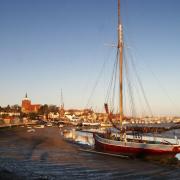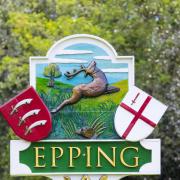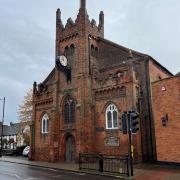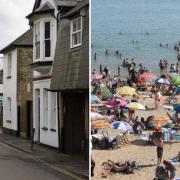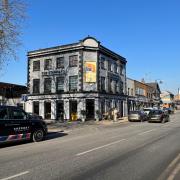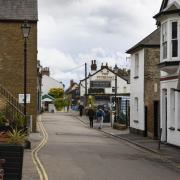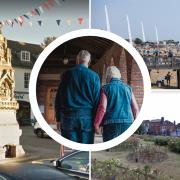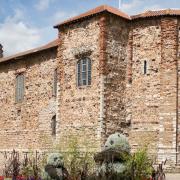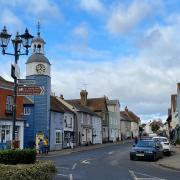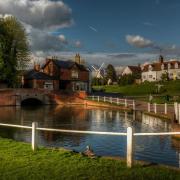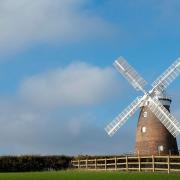75 years since the rebuilding began after World War II, there is a new rebuilding project on the horizon. Stephen Roberts explains the important role Essex played then, and will surely play again

Although the commemorations were subdued by lockdown, our nation recently marked the drawing to a close of World War II, rightly acknowledging the 75 years since VE Day that saw the end of war in Europe.
But even with victory assured, our country and its population had been ravaged by war, being left with much rebuilding to do.
And today, as we remember the 75th anniversaries of these key moments in history, there is more rebuilding to do.
The threat of Covid-19 remains very real, but there appear to be the earliest glimmers of light at the end of the tunnel, as our nation looks towards a new normal, rather than the intensity of full lockdown.
While the road appears long and uncertain, with gloomy forecasts for the national and local economy, we should remember that we have faced similar challenges before (more than once, in fact). As a nation and a county, we have recovered, and we can do so again.
There’s no getting away from it, World War II was the most destructive war in human history, with a conservative estimate of 60 million dead worldwide, the majority of them non-combatants.
The war lasted a full six years and left country and county at a low ebb, struggling with destruction and debt.
Essex suffered. Chelmsford, a centre of light engineering, including the famed Marconi factory, was heavily bombed.
A raid of May 13, 1943 left more than 50 dead and nearly 1,000 homeless, while a V-2 narrowly missed both the Marconi factory and Hoffmans ball-bearing factory on December 19, 1944, but still killed another 39, with nearly 150 injured.
Colchester, a centre for infantry and light anti-aircraft training plus the home of the Paxman factory that made engines for submarines and landing craft, was also hit.
On August 11, 1942, bombs killed 38 in a psychiatric hospital. Brentwood saw more than 1,000 bombs fall, destroying in excess of 5,000 houses and leaving more than 40 dead and nearly 400 injured.
Much rebuilding was needed and yet, just as had happened a generation before following the first World War, recovery came and came at pace. It began with austerity, though. Times were grey and drab.

The winter of 1946-47 was the coldest in living memory, before the so-called Austerity Games (the Olympics of 1948, in London). Rationing would not end fully until 1954.
But there were green shoots relatively quickly. King George VI attended the first ever Formula 1 Grand Prix at Silverstone in 1950, the Festival of Britain took place over the summer of 1951 and by 1957, Prime Minister Harold Macmillan was able to confidently declare, ‘you’ve never had it so good’.
The shift from a wartime to peacetime economy saw some military establishments become redundant, such as the Army base and Essex Regiment depot in Brentwood, which closed in 1959, with much of the site then being redeveloped for the Ford Motor Company.
It was not the first or last time that Ford would establish a presence in Essex. The Dagenham vehicle assembly plant opened between the wars and was employing a high of around 40,000 workers in 1953, while more recently, the Dunton Technical Centre, at Laindon, opened in 1967.

In post-World War II Britain, Essex followed a similar course to that of post-World War I, with an influx. In 1949, the new towns of Harlow, near Epping Forest, and Basildon, on the Thames Estuary, were created.
Their raison d’être was the need to address a chronic shortage of housing in the capital caused by wartime bombing.
It was intended that the new towns would not be an adjunct to London, but would foster a new, local economy independent of the capital. This is what happened. Harlow’s population is now well over 85,000 and Basildon’s even higher, at over 105,000.
Many of today’s residents must be the descendants of those East-Londoners who started a new home in a new town.
Harlow was blessed with Britain’s first-ever pedestrian precinct, public sculpture by renowned artist Barbara Hepworth and also the country’s first modern-style residential tower block (1951), which is now Grade II listed, believe it or not. Yardley (cosmetics) moved into Basildon.
Modernity was the new watchword, epitomised by things we take for granted today (such as houses with bathrooms).
Witham also expanded markedly from the late-1960s, as new housing estates were developed, again driven by the need to create a larger housing stock as part of the ‘new town’ and ‘expanded town’ overspill policy of the time.
It wasn’t all large-scale infrastructure projects either. The village of Great Bentley had two new housing estates built either side of its village green in the 1960s, while another village, Canewdon, also saw residential development at that time, along ‘model village’ lines.
Dreams were realised in the process. The transition into an optimistic, forward-looking world was perhaps crowned in 1961 when the University of Essex was established on the outskirts of Colchester, at Wivenhoe Park.
The war had been grim and exhausting, but in its wake came a better, more comfortable world. Funding was made available to improve living conditions and quality of life: ‘utopia’ was in the air.
In the same way that folk are currently pondering whether they might get their sunshine break this summer, the post-war generation was also in need of a holiday, and then, like today, that most likely meant a trip to the British seaside.
Clacton was one of the places to benefit, as holidaymakers returned in their droves. The pier was developed, a pleasure steamer-service ran from here to London and there was also a summer sailing to Calais.

Butlin’s reopened its holiday camp and the nearby town of Jaywick also expanded, with the inter-war chalets being augmented by more and more caravans. Essex benefited from a post-war boom in ‘staycations’ that would benefit the county economy into the 1970s.
It took time, but Britain and Essex recovered from the exigencies of both world wars and the same will assuredly happen as we face the challenges ahead. Following World War II, bold steps were taken in the immediate post war period (the creation of those new towns in Essex an example).
Similarly, ambitious thinking might be required at this time, on the part of both central and local government. The people of Essex will also play their part, with individual actions and choices making a difference.
Now more than ever, it is time for us all to support the local stores that helped us when we needed them; to discover and embrace our high streets; to get out and explore the county (as restrictions allow); to use your car less, to walk and cycle more, to continue to care for the planet, as well as ourselves and others.
We must keep up the charity fundraising for local hospitals and care homes; we must continue to do a good turn here and there (it doesn’t just have to be during a crisis that being kind makes us feel better about ourselves and the world); we must maintain our appreciation of who the real heroes are; and we must be hopeful.
There’s a better world ahead and Essex, and the people of Essex, will be at the heart of it.



![Marconi, New Street, Chelmsford [DSC_0813]](https://live.staticflickr.com/3648/3468889023_c0b5e105e0_z.jpg)




